#snowfall in spain
Text


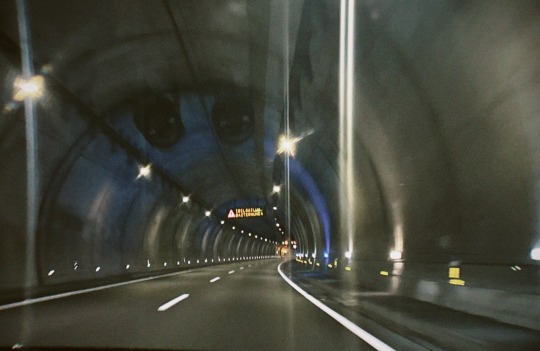
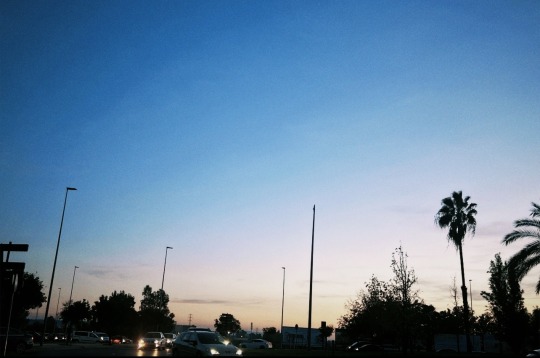
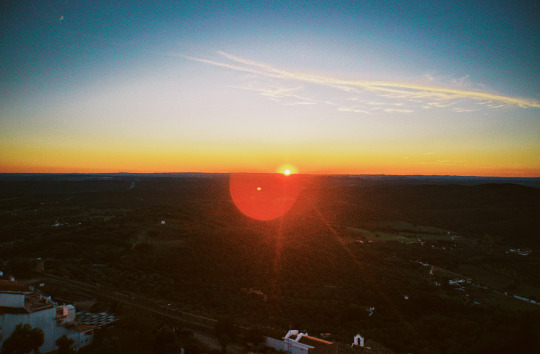

ꜱᴏᴍᴇ ᴀᴇꜱᴛʜᴇᴛɪᴄ ꜱʜɪᴛ ꜰʀᴏᴍ ᴍʏ ᴠᴀᴄᴀᴛɪᴏɴ
#tumblr#vinetage#nature#aesthetic#skyline#sunset#night#sad aesthetic#spain#portugal#vacation#sunrise#sunlover#dark aesthetic#snowfall#snow
16 notes
·
View notes
Video
Snowball fight by Raul Villalon
Via Flickr:
León, Spain - January 2015
#night scene#weather#blizzard#street#city#Leon#Spain#snow#snowfall#people#snowballs#fun#winter#cold#atmosphere#urban#activity#motion#movement#outdoor#holiday#season#dynamic#flickr
9 notes
·
View notes
Text

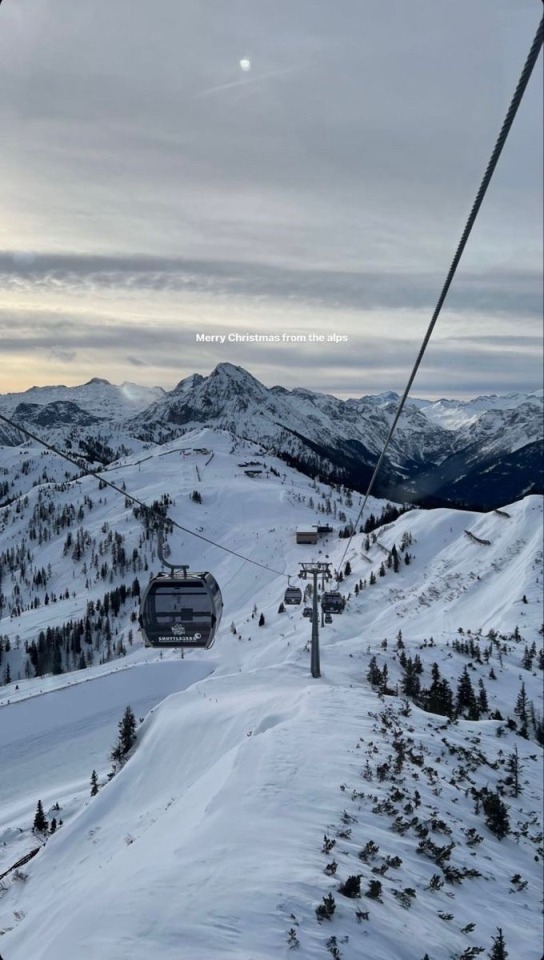


Skiing - a beginner’s guide
I first went skiing in Switzerland with my friends nearly 10 years ago and I loved it. The feeling of the wind on my face, the speed, the adrenaline- it was exhilarating.
I’ve compiled a basic list of ski events, a semi-scandalous article and some of the best destinations in the world as well as some budget friendly ones.
Socialite ski events:
Snowboxx:
Since it launched in 2013, winter festival Snowboxx has been growing in popularity - and it involves flying out to the Alps for a week-long ski party. It takes place in Avoriaz ski resort, Morzine, France each March, and this year saw a superstar lineup of artists performing in the mountains, including ex-Radio 1 DJ Annie Mac, Becky Hill, Jax Jones, Sonny Fodera and Andy C.
The combination of partying to some of the world's best DJs, with the unusual day-activites of skiing and snowboarding, are making many turn away from the summer festival circuit in favour of the winter one.
Hahnenkamm, Kitzbühel , Austria:
The Hahenekamm ski race weekend in Kitzbühel is arguably the biggest alpine ski event in the world. The world’s best take on the iconic Streif downhill track, which is historically the toughest ski race track on the World Cup circuit. A lot of the speed skiers consider winning races here as a bigger honour than the Olympics. As a spectator, the atmosphere is electric with fans around the world admiring some breathtaking ski racing.
X Games, Aspen, USA:
The world’s best freestyle skiers and snowboarders compete annually in Aspen. The event is a prestigious honour to win amongst action sports athletes and has propelled careers. Spectating the event is excellent because you can see most of the action from the viewing areas. The halfpipe events in particular are excellent to watch for this reason.
European Snow Pride, Tignes, France:
Tignes is home to Europe’s biggest gay ski week, with the European Snow Pride. Each day has a theme with nights of brit-pop to superhero days. Many international DJs are invited to play each evening party in the resort’s local clubs and bars.
Slightly scandalous tales: Things I Never Knew About Skiing Until I Was a Private Instructor in Aspen
Really interesting read. I was thoroughly entertained.
Popular ski destinations:
1. Whistler Blackcomb, Canada
Whistler makes it onto pretty much every ‘World Top 10’ list when it comes to ski resorts
2. Niseko, Japan
Located on the northern island of Hokkaido, this Japanese skiing destination is a snow-covered paradise. With a huge 15 metres of average snowfall, it’s no wonder that Niseko is the country’s premier ski resort.
3. Zermatt, Switzerland
As the highest resort in the Alps, it’s got the views. The incredible peak of the Matterhorn can be seen from just about anywhere on the slopes! It also boasts the greatest vertical drop in Switzerland, and there’s all year round skiing at the Matterhorn Glacier.
4. Courchevel, France
The resort is a part of the world’s largest alpine ski area, offering more than 600 kilometres of terrain and interconnected ski runs across 10 summits. The snow here is well-groomed, and there’s a legendary black run that’s considered to be one of the trickiest in the world.
5. Cortina D’Ampezzo, Italy
Known only to the most dedicated, well-travelled skiers prior to the 1956 Winter Olympics, Cortina is a hidden gem in Italy’s Dolomite Mountains.
6. Baqueira-Beret, Spain
It may be a surprising destination for skiing, but Baqueira-Beret in Spain is one of the best places in Europe where you’ll find value for money for a ski holiday. You’ll be able to find affordable accommodation as well as some of the finest tapas restaurants in the country.
7. Ylläs, Finland
The arctic landscapes of Lapland are perfect for skiing. If you dream of snow-dusted trees, the magic of the Northern Lights, or the glow of the midnight sun, Ylläs is a unique winter resort that you won’t want to miss. As Finland’s largest ski resort, it’s got everything you need.
Budget friendly destinations
1. Vogel, Slovenia
An ideal spot for couples or families, this Slovenian spot is a truly beautiful and peaceful ski area. Overlooking Lake Bohinj, Vogel is part of the Triglav national park.
2. Livigno, Italy
Duty-free zone Livigno offers excellent slopes for intermediate skiers. But advanced skiers and snowboarders will be kept busy too – especially if they’re keen to explore off piste.
3. Poiana-Brasov, Romania
Poiana Brasov is Romania’s biggest mountain resort and certainly one of the nicest. The fairytale slopes, flanked by pine trees, are the perfect place to take your skis. With more than 24km of ski runs, there’s plenty to explore.
4. South Korea -Muju Deogyusan Resort
Muju Deogyusan Resort in Jeolla province is only 3 hours away from Seoul. So, if you want to spend your holiday skiing and still enjoy the city of Seoul, this is the place to go.
5. Niseko Ski Resort
Located in Hokkaido, Japan, Niseko Ski Resort boasts a total of four different resorts but with linked ski area. A single pass would give you access to all four resorts. One of the resorts, Mt. Resort Grand Hirafu has been officially named as Japan’s number one snow resort due to the wide array of activities offered.
6. India - Gulmarg
Gulmarg is a rare gem in the Himalayans that will undoubtedly take your breath away with its picturesque beauty. However, skiing in Gulmarg, Kashmir is not for the weak-hearted as the terrains are not suitable for beginners - to add to that, the ski lifts carry you to the highest point in the Himalaya at 13, 780 feet!
7. China - Nanshan Ski Resort
80km away from Beijing, Nanshan Ski Resort is perfect for skiing and snowboarding as the snow are neither too hard nor too soft.
#c suite#powerful woman#strong women#ceo aesthetic#personal growth#that girl#productivity#q/a#getting your life together#balance#skiing#sports#socialite
316 notes
·
View notes
Text
A PROVINCE IN PHOTOS - MADRID







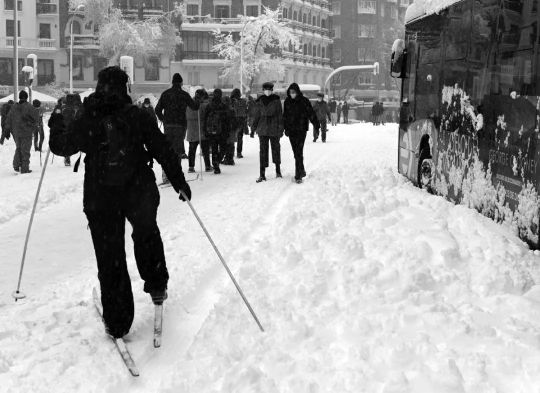


sources: 1, 2, 3, 4, 5, 6, 7, 8, 9, 10
pic 1 was taken in plaza mayor, the main square of madrid. pic 2 is from the guadarrama mountains. pic 3 was taken in the retiro park. pic 5 depicts a stand in el rastro, the largest flea market in the country. pic 6 was taken in the congreso de los diputados, the national parliament of spain. in pic 7 you can see the cuatro torres, the four tallest buildings in spain and a financial hub. pic 8 shows the city during the filomena storm in january 2021, the heaviest snowfall in over a century with up to 60 cm of snow and -15 ºC. pic 9 shows the san isidro prairie, where the main festivities of the city take place. finally, pic 10 was taken in tirso de molina square.
22 notes
·
View notes
Text

https://apnews.com/article/migrants-senegal-missing-boats-spain-canary-0127ff55f704824feb6018f8d4ac3ad4
11 notes
·
View notes
Text

It’s a beautiful August day, and Saige Copeland couldn’t bear to stay indoors! She brought her easel and canvas outside, with her dog Sam, to put the finishing touches on her latest work. The painting features the beautiful, rugged Sandia Mountains that border the city of Albuquerque to the east.
While she paints, Saige is going to share some facts about her hometown that you probably didn’t know!

Saige lives in Albuquerque, New Mexico. The population is around 500,000. That makes it the most populous city in the state, but it is not the state’s capitol. That honor goes to Santa Fe, about 60 miles northeast.
The state of New Mexico was added to the union in 1912, making it the 47th of 50 states. Prior to statehood, it had been a territory since 1848, when the US forcibly seized it from Mexico as a means to repay Mexico’s debt. It was a colony of Mexico from 1821 to 1848. Before that, it was occupied by Spain from 1598 to 1821. No other state in the US has seen three different flags flying over it.
Albuquerque was founded in 1706, which is about 100 years after Santa Fe was founded. But indigenous people have lived (and still live) in the area for centuries prior, living in pueblos, or small densely populated settlements.
Bordering the north of the city is Sandia Pueblo, and to the south is Isleta Pueblo. Both places have been continually inhabited for close to 1000 years. Pueblos are similar in concept to reservations, but have a few differences. There are 19 pueblos in total in New Mexico.

The Rio Grande (Spanish for “great river”) flows right through the middle of the city. It’s very wide and shallow in this area. It starts in the Rocky Mountains far to the north in the state of Colorado, and flows southeast into Texas, where it forms the border between the United States and Mexico until it ends at the Atlantic Ocean.
Albuquerque sits at an elevation of around 5,300 feet, a little over a mile high, or 1600 meters. That’s actually a bit higher than Denver, Colorado, which is known as the “mile high city”!
The weather conditions are near perfect for most of the year, with the city enjoying 310 days of sunshine every year! Spring and autumn are beautiful. Early summer does have a few very hot days, but those cool down closer to July and August. Those two months are the monsoon season, when it rains nearly every day, but rarely last longer than a couple of hours. Winters are mild, with only one or two heavy snowfalls a year and a few smaller snowfalls.

The Sandia Mountains, which Saige is painting, rise to a height of 10,678 feet or 3,254 meters. That might sound very high, but they are by no means the highest mountains in the state! There are many higher peaks farther north. Sandia is the Spanish word for “watermelon”, because they turn lovely shades of watermelon red and pink when they catch the light of sunset. At the top, you can stand at the scenic lookout point, do some more hiking through the beautiful forest, stop by the cafe and gift shop, and then ride the ski gondola all the way down to the bottom.
That’s right: there’s a ski resort at the top of the mountain! It’s actually on the east side of the mountain, facing away from the city, since that gets colder temperatures and more snow. If you don’t want to climb on foot or take the ski gondola, you can just drive to the top. The Sandia Crest Scenic Byway starts at the bottom on the east side, and goes up 3000 feet/ 914 meters to the top, passing through several different ecosystems. As you go up, the trees change from pine to spruce and aspen, and you can still see snow on the ground as early as October or as late as May.
Both Saige and I love spending time in the Sandia Mountains. Where she is set up painting is part of Cibola National Forest, and it’s set right up against the mountainside. It doesn’t even feel like you’re so close to the city! There are miles and miles of hiking trails and plenty of scenic viewpoints.

All finished!
Thanks, Saige, for sharing! Your painting looks beautiful!
29 notes
·
View notes
Text
The 'sustainable' megaproject of Aragon: 4.3 km of cable car in a mountain valley on its way to protection
A great sustainable project for some. An environmental disaster and investment destined for failure for others. The already old desire for Aragon to have the biggest skiable domain in Spain, and one of the biggest in the world, entails the construction of a cable car of 4.3 km (2.6 miles) through a mountain valley on its way to being a protected natural space. That, alongside the non-stop warnings on the progressive reduction in the amount of snowfall, awakens many environmental doubts around the project.
The obstacles, however, don't stop the determination of the government (centre-left and right wing), who are clinging to the hope of internationalizing snow tourism in Aragon and compete with the big alpine stations. They also base this on the fact that this sector makes up 7% of Aragon's GDP and employs arounds 14000 people.
On this basis, on the 25th of January, the Aragonese Consejo de Gobierno gave the green light to the colaboration agreement ratified by the autonomic executive, the Diputación Provincial de Huesca (DPH), Aramón (group collectively owned by the Aragonese Government and Ibercaja by 50% each, and who controls most of the ski stations in the region), Formigal, and the Valle de Astún ski station. The final agreement will be signed on the 14th of February, and the DPH will be the one to develop the investment.
Podemos and Chunta Aragonesista (who form part of the 4 governing parties of Aragon, alongside PSOE and Partido Aragonés- PAR) have shown opposition to this agreement.
More than 26 million euros of the European funds to build the biggest skiable domain in Spain
The project consists of the union between the Tena and Aragón valleys, which entails, on one side, the union between the Astún and Formigal ski stations, and on the other, the union between Astún and Candanchú. In total, around 300 km of snow, the total amount of the current capacity, since in theory, they assure that no new ski stations will be built. It would become the 10th biggest skiable domain in the world and would lead the ranking in Spain
It's not a novel objective. In 2013, with PP ["Popular Party", the right-wing party] and PAR in the government coalition, the administrative process for the Declaración de Interés General [General Interest Declaration] project was started.
After years of slumber, it's now under way thanks to the concession of 33.7 millions of euros to the Aragonese government for the development of five Sustainable Touristic Plans. They are wholly financed by the Next Generation EU funds of the Plan for Recovery, Transformation and Resilience. The help requisites require that the project be finished by 2025.
From the total amount, the biggest cut will be given to this union of ski stations (26.4 million euros). And it's calculated that 8 million more will be given from the autonimical government's pockets.
The protection of Canal Roya
Certainly, the biggest controversy around the project is the 4.3 km cable car which will cross the Canal Roya valley to join Astún and Formigal. It will take 14 minutes to cross and it will transport 2400 people each hour.
The controversy arose because in 2006 (with PSOE [socialist centre-left] and PAR in the government) decreed the start of the approval procedure for a Natural Resources Order Plan in the Aragon and Tena valleys, which would entail, among others, Canal Roya.
This planning [...] textually states: "During the processing of this plan, no acts that supose an appreciable transformation of the biological and physical reality will be allowed to be carried out, that could make it impossible or significantly hinder the achievements of its objectives."
Furthermore, it adds that "until the final approval of the Natural Resources Order Plan, no authorizations, licenses or concessions will be able to be carried out, without a favorable report from the Environmental Department"
The development of the Natural Resources Order Plan requires the creation of a consultive council. And that was what happened. In that same legislature and the next (2007-2011, with PSOE and PAR once again), the project (slowly) continued, with public involvement.
[...]
Ecologist groups think that the Government will have to return the funds and will ask Brussels for help accelerating its protection.
The five national ecologist organizations (Amigos de la Tierra, Ecologistas en Acción, Greenpeace, SEO/BirdLife and WWF) have positioned themselves completely against the station union. In the coming months they will try to put pressure in Brussels so the development of the Natural Resources Order Plan is sped up, and that way avoid that the creation of this skiable domain.
[...]
They uphold that "it's disguised as sustainable tourism, but it doesn't comply with the principle of 'Do No Significant Harm'. This is a condition established by the EU for European fund allocation, that makes people justify that the financed projects won't negatively impact any of the six environmental objectives defined by the EU"
Is there anything left for the snow business?
Apart from the six already mentioned, which includes the creation of the bigger skiable domain, Aragon will manage a few other Sustainable Tourism Plans from 2021. In total, around ten touristic projects which entail over 63 million euros. Of those, 53 million (over 84%) will go to snow tourism.
A complete bet on this sector, which seems to clash with the scientific warnings of the increasing snow scarcity.
[...]
This is what ecologist organizations are clinging to. In the statement already mentioned they also state that the union of stations "should not be carried out due to its negative environmental impact. But also because it would continue an unsustainable development model. A bet that doesn't generate quality work positions and that is destined to dissapear due to meteorological conditions caused by climate change"
In this same line, Paco Iturbe, representative of the Plataforma en Defensa de las Montañas de Aragón [Platform for the Defense of the Mountains of Aragon], explains that the Pyreenean valley of Canal Roya is "a sanctuary" because of its flora and fauna: "It's onoe of the only places in the Pyrenees which is unspoiled. Destroying it is like losing one of the identity marks of Aragon. On top of that, for nothing, just for an activity which will be unsustainable in 10 or 20 years tops.
[...]
Please consider signing the petition to oppose the construction.
6 notes
·
View notes
Text
Ski & Snow Activities in Andorra - Snow Andorra
Andorra is a small country nestled in the Pyrenees Mountains between Spain and France. With its breathtaking mountain scenery and abundant snowfall, it has become a popular destination for ski and snow enthusiasts from around the world. Snow Andorra is a leading company that offers a wide range of ski and snow activities for all ages and skill levels. Whether you are a beginner looking to learn the basics or an experienced skier seeking thrilling slopes, Andorra has something to offer everyone.
0 notes
Text
Every match an adventure
Football in countries with snowy climates can be quite a unique experience. In Spain, where the sun often graces the pitches, the idea of football in the snow might seem distant. However, some youngsters attending SPAIN BOARDING SCHOOL yearn for the opportunity to experience this wintry twist on the beautiful game.
Meanwhile, across EUROPE BOARDING SCHOOL students from various nations get to enjoy the thrill of snow-covered fields when winter descends. It's a stark contrast to the sunny pitches in Spain, and it creates a different kind of footballing magic. These young players learn to adapt to the frosty conditions, gaining valuable skills in the process.
SPAIN FOOTBALL, renowned for its passionate fans and top-tier clubs, usually thrives in a temperate climate. However, the occasional snowfall in certain regions can introduce an exciting challenge to the game. Spanish players are not accustomed to the frosty conditions, but they adapt quickly, displaying their versatility on the field. INTERNATIONAL FOOTBALL competitions often showcase the diversity of climates around the world. Countries with snowy winters bring their own flair to the game, making it a spectacle for fans globally. When the world unites in the spirit of the game, it's a reminder that football transcends borders and weather conditions, making every match an adventure, whether under the Spanish sun or amidst the European snow
0 notes
Text
"Oh I probably won't put too much into Grusha, just a funky little guy! It's my first solo muse blog after all let's not go overboard :)"
Cut to me, up at 2 am, 20 tabs open.
Literally 😭 we have:
- Moon phase schedule in Spain 2023
- Italian idioms
- How to write accents
- History of human-animal hybrids
- History of medical anomalies
- Cultural spirits lore
- Upside down text generator
- Paldean pokedex
- Dnd races w/ photos
- Terapagos full fanlore
- Traditional Italian foods and drinks
- Italian traditions
- List of conditions that prevent blood from being donated
- Italian cultural pottery
- Most unique deaths on Mt. Everest
- Worst surgery accidents
- Froslass lore
- Werewolf full lore
- Weavile dex entry
- Traditional snowfall festivals
1 note
·
View note
Text
Roofing Styles Around the World: A Global Tour of Architectural Excellence

Roofs are more than just functional elements; they are an integral part of a building's character and architectural design. In this article, we will embark on a virtual global tour to explore diverse roofing styles from around the world. From the elegant curves of traditional Chinese roofs to the rustic charm of thatched roofs in England, we will showcase the beauty, cultural significance, and architectural excellence of different roofing designs. Join us on this inspiring journey as we delve into the rich tapestry of global architectural diversity.
Roofing Style 1: "Traditional Chinese Roofs"
In this section, we will explore the distinct features and symbolic significance of traditional Chinese roofs. From the curved eaves to the vibrant colors and intricate ornamentation, Chinese roofs exude elegance and grandeur. We will delve into the historical and cultural context behind these roofing styles, exploring their connection to Chinese architecture, Feng Shui principles, and traditional craftsmanship.
Roofing Style 2: "Mediterranean Terracotta Roofs"
The warm hues of terracotta roofs found in the Mediterranean region will charm you. From Italy to Greece and Spain, terracotta tiles have become synonymous with Mediterranean architecture. We will examine the practical and aesthetic aspects of these roofs, discussing their durability, thermal properties, and seamless integration with the local architectural styles. Get ready to be transported to sun-soaked landscapes dotted with terracotta rooftops.
Roofing Style 3: "The Thatched Roofs of England"
Step into the picturesque countryside of England, where thatched roofs reign supreme. We will uncover the timeless appeal and rustic beauty of thatched roofs commonly seen in traditional English cottages. From the choice of materials, such as wheat straw or reed, to the intricate craftsmanship required for their construction, we will delve into the secrets behind these unique roofs. Discover how thatched roofs connect to English heritage and provide a cozy, inviting ambiance.
Roofing Style 4: "Modernist Flat Roofs"
In the realm of modern architecture, flat roofs have become synonymous with sleek, minimalist design. We will explore the clean lines and functional considerations behind modernist flat roofs, popularized by architects like Le Corbusier and Mies van der Rohe. From their ability to create seamless indoor-outdoor transitions to their integration with contemporary materials, we will uncover the essence of these iconic roofs and their impact on modern architectural aesthetics.
Roofing Style 5: "Islamic Architecture's Dome Roofs"
Prepare to be awe-struck by the grandeur and elegance of dome roofs found in Islamic architecture. From the majestic domes of mosques to the ornate roofs of palaces, these architectural marvels showcase intricate geometric patterns, structural innovations, and a symbolic connection to the divine. We will unravel the secrets behind dome roof construction, exploring their cultural significance, structural engineering, and the mesmerizing play of light and shadow within these sacred spaces.
Roofing Style 6: "Scandinavian Gable Roofs"
Travel to the Scandinavian region, where gable roofs dominate the landscape with their simplicity and practicality. These roofs feature steep slopes designed to shed heavy snowfall and withstand harsh climates. We will explore the use of durable materials, such as wood or metal, and how gable roofs seamlessly blend with their natural surroundings. Discover how these roofs have become a defining element of Scandinavian architecture, offering both functionality and aesthetic appeal.
Roofing Style 7: "The Modern Green Roofs"
In an era of sustainability, green roofs have emerged as innovative and eco-friendly roofing solutions. We will explore the rise of these visually striking roofs, adorned with lush vegetation that brings nature back to urban environments. From their environmental benefits, such as improved air quality and stormwater management, to their energy efficiency and urban integration, we will unravel the secrets of modern green roofs. Discover how these roofs have become symbols of harmonious coexistence between architecture and nature.
Explore the world of roofing styles across different cultures, drawing inspiration from architectural excellence worldwide.
The world is a tapestry of diverse cultures, and Toms Roofing in Toms River understands the importance of embracing different roofing styles to cater to the architectural landscape. In this global tour of roofing styles, including Toms River Roofer, we have explored the elegance of traditional Chinese roofs, the warmth of Mediterranean terracotta roofs, the charm of English thatched roofs, the modernist aesthetics of flat roofs, the grandeur of Islamic dome roofs, the practicality of Scandinavian gable roofs, and the environmental benefits of modern green roofs. Through this journey, we hope to inspire readers to appreciate the architectural excellence found in different roofing designs and seek inspiration for their own projects. Let the global diversity of roofing styles, combined with the expertise of Toms River Roofing, ignite your imagination and propel you towards creating your own architectural masterpiece in Toms River.
#roofing#roofers#new jersey roofer. toms river roofer#roofing contractor#roofing business#local roofing#local roofers
0 notes
Text
According to VynZ Research, the Global Cloud Seeding Market Size will be at USD 0.25 billion by 2030, and it is anticipated to grow at a CAGR of 5.5% during the forecast period (2022-2030)
The research report offers a thorough overview of the global market for Cloud Seeding Market and insightful analysis on segmentation, dynamics, competition, and regional growth. The report's predictions are supported by recognized research methodologies and presumptions and look at specific strategies, then vendor profiles for the Global Cloud Seeding Market .
The latest global Cloud Seeding Market report answers the following question
Which geographical areas will continue to be the most lucrative for companies in the global Cloud Seeding Market ?
Which circumstances during the assessment period will cause a shift in the demand for Cloud Seeding Market ?
How will the market be impacted by evolving trends?
Which businesses are dominating the Cloud Seeding Market sector?
What successful tactics do market participants use to strengthen their positions in this environment?
Get a sample copy: https://www.vynzresearch.com/aerospace-and-defense/cloud-seeding-market /request-sample
'Competitive Insight' section of this report provides a comprehensive study for readers to get a thorough overview of market’s competitive landscape, challenges and opportunities for entrants to survives and for leading market players to participate in the growth plan.
Top players in the market are:
3D SA
Weather Modification, Inc.
RHS CONSULTING, LTD.
NAWC Inc.
Snowy Hydro Limited
Mettech S.p.A
Cloud Seeding Technologies
Ice Crystal Engineering
American Elements
Seeding Operations and Atmospheric Research
Market segment analysis
The segments of the report are classified byOffering, Mode of Delivery, End User and Geography and factors dominating the market and impacting the market growth plan during the forecast period.
The global market is segmented into the following sub-segments: -
Seeding Type Insight and Forecast 2018-2030
Ground-Based Seeding
Remote Ground-Based Generator
Manual Ground-Based Generator
flare trees
Aerial-Based Seeding
Burn-in-Place Flare Rack
Ejectable Flare Rack
Seeding Technique Insight and Forecast 2018-2030
Hygroscopic
Glaciogeneic
Application Insight and Forecast 2018-2030
Fog Dissipation
Hail Suppression
Snowfall and Rainfall Augmentation
Others
Geographical Segmentation
Cloud Seeding Market by Region
North America
By Seeding Type
By Seeding Technique
By Application
By Country – U.S., Canada, and Mexico
Europe
By Seeding Type
By Seeding Technique
By Application
By Country – Germany, U.K., France, Italy, Spain, Russia, and Rest of Europe
Asia-Pacific (APAC)
By Seeding Type
By Seeding Technique
By Application
By Country – China, Japan, India, South Korea, and Rest of Asia-Pacific
Rest of the World (RoW)
By Seeding Type
By Seeding Technique
By Application
By Country – Brazil, Saudi Arabia, South Africa, U.A.E., and Other Countries.
0 notes
Quote
Chopin – Prelude op.28 no.15 “Raindrop”
It’s been a dreary November here in Chicago, with freezing temperatures, snowfall next to fiery leaves, and recent grey rain misting through the day. Something about driving around the north suburbs with this backdrop made me think of Chopin’s “raindrop” prelude, which I was “playing” in my head while my friend had the latest pop hits on his car radio. Ironic because Chopin wrote his op.28 preludes while on vacation with his lover, the writer George Sand[wholivedaveryinterestinglifeIsuggest[wholivedaveryinterestinglifeIsuggestreading up on her]. They were staying in Mallorca, an island off the coast of Spain, because Chopin’s health was rough [typical for him] and the doctor suggested a warmer climate. Not so ironic, thinking as I write this, because I remember they notoriously had a bad time. Not only were the Catholic innkeepers very against the idea of two unmarried people staying together, but it was also dreary rainy weather. The nickname “raindrop” comes from the romanticized idea that the obsession with a repeated Ab note is somehow supposed to be a musical picture of raindrops tapping against the roof. And since Chopin was the very first composer I heard getting into classical music, I can’t help but fall for the imagery. The prelude is in a bit of an ABA form, the A section being a tender melody that lulls by, while the B takes an unexpected turn into something more dramatic and dark, becoming a powerful statement like thunder off in the distance, before drawing back to the opening melody. Argerich plays this a bit fast for my taste, but it’s still a great performance and I’d rather she play “too fast” than to be super gushy with the melody like a lot of pianists use as a crutch.
mikrokosmos: Chopin – Prelude op.28 no.15 “Raindrop” It’s been a dreary November here in Chicago, with freezing temperatures, snowfall next to fiery leaves, and recent grey rain misting through the day. Something about driving around the north suburbs with this backdrop made me think of Chopin’s “raindrop” prelude, which I was “playing” in my head while my friend…
0 notes
Quote
Chopin – Prelude op.28 no.15 “Raindrop”
It’s been a dreary November here in Chicago, with freezing temperatures, snowfall next to fiery leaves, and recent grey rain misting through the day. Something about driving around the north suburbs with this backdrop made me think of Chopin’s “raindrop” prelude, which I was “playing” in my head while my friend had the latest pop hits on his car radio. Ironic because Chopin wrote his op.28 preludes while on vacation with his lover, the writer George Sand[wholivedaveryinterestinglifeIsuggest[wholivedaveryinterestinglifeIsuggestreading up on her]. They were staying in Mallorca, an island off the coast of Spain, because Chopin’s health was rough [typical for him] and the doctor suggested a warmer climate. Not so ironic, thinking as I write this, because I remember they notoriously had a bad time. Not only were the Catholic innkeepers very against the idea of two unmarried people staying together, but it was also dreary rainy weather. The nickname “raindrop” comes from the romanticized idea that the obsession with a repeated Ab note is somehow supposed to be a musical picture of raindrops tapping against the roof. And since Chopin was the very first composer I heard getting into classical music, I can’t help but fall for the imagery. The prelude is in a bit of an ABA form, the A section being a tender melody that lulls by, while the B takes an unexpected turn into something more dramatic and dark, becoming a powerful statement like thunder off in the distance, before drawing back to the opening melody. Argerich plays this a bit fast for my taste, but it’s still a great performance and I’d rather she play “too fast” than to be super gushy with the melody like a lot of pianists use as a crutch.
mikrokosmos: Chopin – Prelude op.28 no.15 “Raindrop” It’s been a dreary November here in Chicago, with freezing temperatures, snowfall next to fiery leaves, and recent grey rain misting through the day. Something about driving around the north suburbs with this backdrop made me think of Chopin’s “raindrop” prelude, which I was “playing” in my head while my friend…
0 notes
Quote
Chopin – Prelude op.28 no.15 “Raindrop”
It’s been a dreary November here in Chicago, with freezing temperatures, snowfall next to fiery leaves, and recent grey rain misting through the day. Something about driving around the north suburbs with this backdrop made me think of Chopin’s “raindrop” prelude, which I was “playing” in my head while my friend had the latest pop hits on his car radio. Ironic because Chopin wrote his op.28 preludes while on vacation with his lover, the writer George Sand[wholivedaveryinterestinglifeIsuggest[wholivedaveryinterestinglifeIsuggestreading up on her]. They were staying in Mallorca, an island off the coast of Spain, because Chopin’s health was rough [typical for him] and the doctor suggested a warmer climate. Not so ironic, thinking as I write this, because I remember they notoriously had a bad time. Not only were the Catholic innkeepers very against the idea of two unmarried people staying together, but it was also dreary rainy weather. The nickname “raindrop” comes from the romanticized idea that the obsession with a repeated Ab note is somehow supposed to be a musical picture of raindrops tapping against the roof. And since Chopin was the very first composer I heard getting into classical music, I can’t help but fall for the imagery. The prelude is in a bit of an ABA form, the A section being a tender melody that lulls by, while the B takes an unexpected turn into something more dramatic and dark, becoming a powerful statement like thunder off in the distance, before drawing back to the opening melody. Argerich plays this a bit fast for my taste, but it’s still a great performance and I’d rather she play “too fast” than to be super gushy with the melody like a lot of pianists use as a crutch.
mikrokosmos: Chopin – Prelude op.28 no.15 “Raindrop” It’s been a dreary November here in Chicago, with freezing temperatures, snowfall next to fiery leaves, and recent grey rain misting through the day. Something about driving around the north suburbs with this backdrop made me think of Chopin’s “raindrop” prelude, which I was “playing” in my head while my friend…
0 notes
Quote
Chopin – Prelude op.28 no.15 “Raindrop”
It’s been a dreary November here in Chicago, with freezing temperatures, snowfall next to fiery leaves, and recent grey rain misting through the day. Something about driving around the north suburbs with this backdrop made me think of Chopin’s “raindrop” prelude, which I was “playing” in my head while my friend had the latest pop hits on his car radio. Ironic because Chopin wrote his op.28 preludes while on vacation with his lover, the writer George Sand[wholivedaveryinterestinglifeIsuggest[wholivedaveryinterestinglifeIsuggestreading up on her]. They were staying in Mallorca, an island off the coast of Spain, because Chopin’s health was rough [typical for him] and the doctor suggested a warmer climate. Not so ironic, thinking as I write this, because I remember they notoriously had a bad time. Not only were the Catholic innkeepers very against the idea of two unmarried people staying together, but it was also dreary rainy weather. The nickname “raindrop” comes from the romanticized idea that the obsession with a repeated Ab note is somehow supposed to be a musical picture of raindrops tapping against the roof. And since Chopin was the very first composer I heard getting into classical music, I can’t help but fall for the imagery. The prelude is in a bit of an ABA form, the A section being a tender melody that lulls by, while the B takes an unexpected turn into something more dramatic and dark, becoming a powerful statement like thunder off in the distance, before drawing back to the opening melody. Argerich plays this a bit fast for my taste, but it’s still a great performance and I’d rather she play “too fast” than to be super gushy with the melody like a lot of pianists use as a crutch.
mikrokosmos: Chopin – Prelude op.28 no.15 “Raindrop” It’s been a dreary November here in Chicago, with freezing temperatures, snowfall next to fiery leaves, and recent grey rain misting through the day. Something about driving around the north suburbs with this backdrop made me think of Chopin’s “raindrop” prelude, which I was “playing” in my head while my friend…
0 notes
